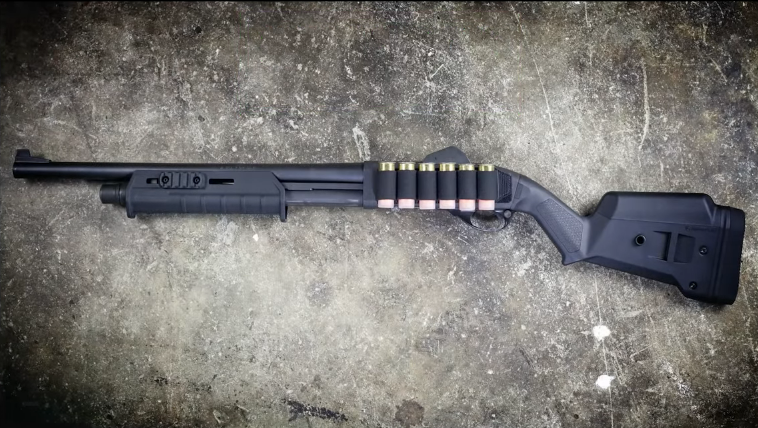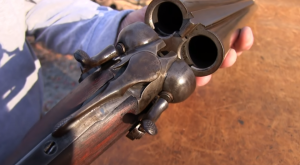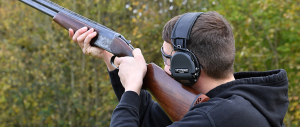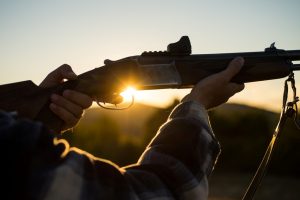One of the biggest parts of having a shotgun is choosing how to store it. There are several schools of thought on how firearms should be stored, and when the two camps overlap, there’s sure to be a bit of vitriol about how guns should be stored. Should you keep a shotgun loaded at all times?
What We'll Cover
A shotgun should not be fully loaded at all times. Shotguns are dependable, but one of the firearm’s main failures is the spring inside the magazine mechanism. Keeping the magazine fully loaded weakens the spring on the inside and could fail to feed shells into the tube.
One of the most significant drawbacks of having a loaded shotgun is that it can easily discharge when jarred. Handguns have been produced to prevent this, but the shotgun has stayed the same over the years and will go off if dropped or impacted in the right spot. Don’t sweat it! Read on and learn why you shouldn’t keep a shotgun loaded at all times.
Reasons Not to Keep a Loaded Shotgun at all Times
Firearm safety is one of the most important aspects of owning guns. If you can’t be safe with them, you don’t need to have them. One of the primary arms of gun safety is learning how to load and safely unload the firearm. Once shells are placed in a shotgun, it becomes ‘hot’ and should be given the widest berth when wielding.
Some people like to play with handguns by flipping and twirling them. Never do this with a shotgun. They are finicky and could discharge without so much as a hard sneeze. These are for older models especially. Older shotguns are known to have hair triggers and should be treated like dynamite at all times.
Magazine Damage Occurs When Stored Fully Loaded
It is incredible how often a shotgun fires when it is called upon. The simple hammer mechanism makes it so that when you pull the trigger, the weapon will fire. The cocking, or pump mechanism, ensures that you get the results you are after when the time is right. Boom. It’s a boom you are after.
The shotgun usually holds between six and eight shells in the magazine. Having the gun fully loaded means that all of the pressure from the magazine spring is reduced. If you continue to store the shotgun this way, the spring will fail, and you won’t be able to rack more rounds into the chamber when pumping the gun.
The weakening of the spring is a critical malfunction that will end your day of shooting or hunting very quickly. Once it breaks, rounds will not move from the magazine to the chamber where it can be fired. The spring is vital in keeping the firearm in fine working order. A good shooter never uses a weapon that could harm them.
Take a Page from the Police When Storing Your Shotgun
If you have been up close and personal with a police cruiser, you might have noticed that they have an extra shotgun either upfront or locked away in the trunk for when it is needed. The weapon must be ready at a moment’s notice, just like a home defense shotgun. Cops have figured out the trick to storing your shotgun and keeping it ready for use.
The way police keep their shotguns ready for action is by only having three or four shells in the magazine and the chamber open. When it is time to rock and roll, you pump the shotgun, and the shell goes into the chamber and is ready for action. Having only half capacity in the mag means the spring is not over-tightened and could fail.
This ‘cruiser ready’ style works great for your home defense shotgun. Having a round in the chamber means that the gun could go off if impacted incorrectly. Having a few in the mag means that you can rack the gun and be ready for anything.
Mind the Safety When Storing Your Shotgun
Another big thing about storing your shotgun loaded is that you could forget to swap the safety over. In the heat of the moment, you don’t want to pull the trigger, and your safety takes over. It could be a life or death situation, and you should take time to work with fingering the safety as you bring the gun up to your sight picture.
The biggest hoopla about guns is whether to store with the safety on or off. If you have ever been dove hunting with a person who has years under their belt, they have a fluid motion that releases the safety and pulls the trigger in under a second. This skill isn’t something you are lucky and born with. It takes months of trigger time to get the movements down.
The safety is there to prevent negligent discharges and from someone pulling the trigger and blowing a hole in the ceiling. You should always check the tube as the safety doesn’t stop the firing pin from functioning and firing the weapon.
Go with Your Gut if All Else Fails
Knowing what you can do with your shotgun is also essential. Often people forget that their children or other family members could be downrange from their fire. Something powerful like a rifle will shoot for several hundred yards, whereas a shotgun will only be good to around 100 feet. Always ensure that muzzle safety is followed at all times.
Trusting yourself in a dangerous situation will mean that you take your time and practice procedures just like a fire drill. Inform the family of their responsibilities in the event of a break-in and make sure they follow the plan. Try and make the exercises fun, and the kids will see them less as a scary situation and more like a family game.
Discharges are Common with Shotguns
Something that you may not have heard about shotguns is how they can discharge easily. The gun is made for birds and small game and having a trigger that squeezes fast and easy is imperative. This is great for the gaming field and terrible for storing the weapon in your home. The most common place you see a shotgun is propped in the corner.
If a shotgun has a shell in the chamber and topples over in the corner, there is a high probability that it goes off. You can keep the gun loaded but leave some room in the magazine to maintain the magazine spring’s integrity.
Hair triggers are most common in older shotguns because the firing mechanisms are worn. Inspect older weapons and make sure that they are in working order before storing them in your home.
Conclusion
Having a shotgun fully loaded and stored in your home isn’t a good idea. The spring inside the magazine will begin to lose its force over time, and the shotgun will fail. It fails because the shells won’t eject correctly and racking the pump does nothing. Store just a few rounds in the gun to help preserve the integrity of the spring.
Having a loaded shotgun in your home is also a bad idea because it can easily discharge and cause injury or death. A shotgun was made to fire. Be careful when moving or storing the weapon as sometimes just a short fall from a shelf is enough force to make the gun discharge.
The responses below are not provided, commissioned, reviewed, approved, or otherwise endorsed by any financial entity or advertiser. It is not the advertiser’s responsibility to ensure all posts and/or questions are answered.





